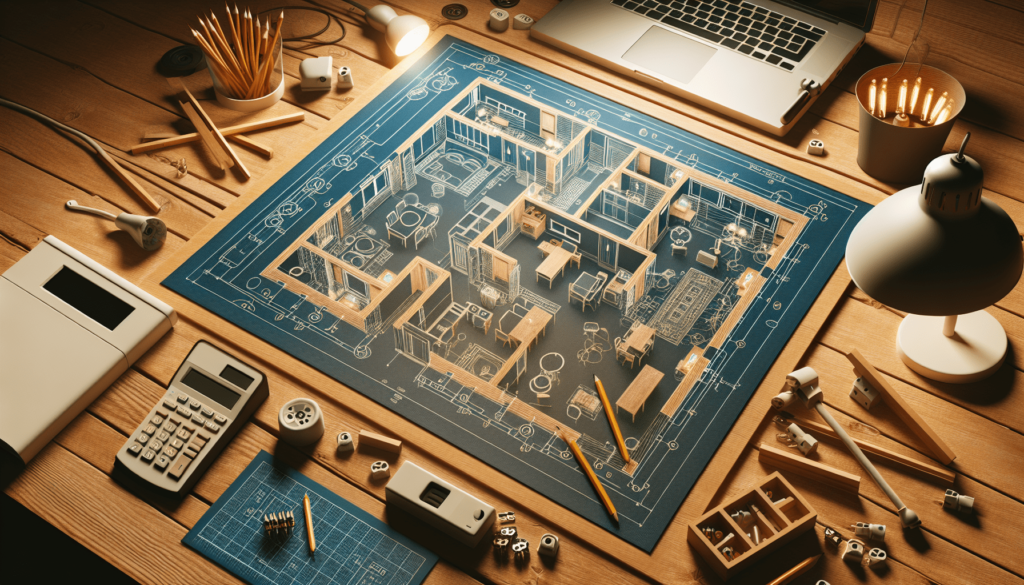

Have you ever thought about how essential electrical planning is when designing your dream home? It’s an aspect that can often be overlooked, but careful electrical planning ensures your home is both functional and safe. Let’s break down the key elements of house plan electrical systems and how they impact your living space.
Understanding Electrical Plans
Creating an electrical plan is a crucial step in your home construction or renovation journey. It outlines where all your wiring, outlets, switches, and fixtures will be located to ensure efficiency and safety.
Importance of Electrical Plans
An effective electrical plan can help you avoid costly mistakes and ensure compliance with local building codes. It allows you to see how electrical systems fit into your overall floor plan, helping you visualize placement and functionality.
Components of an Electrical Plan
There are several key components that make up an effective electrical plan:
-
Wiring: The backbone of your electrical system. It connects everything together.
-
Outlets: These will need to be strategically spaced throughout your home for convenience.
-
Switches: Consider the location of light switches in relation to your fixtures to make your space more functional.
-
Fixtures: These include lights, ceiling fans, and any other lighting elements.
Key Considerations for Electrical Planning
Let’s highlight some factors you should think about as you develop your electrical plan.
Size of Your Home
The larger your home, the more complex your electrical plan will be. More square footage means more outlets, switches, and wiring, which can add complexity and cost. Make sure to consider the total area when developing your electrical layout.
Functionality Needs
Consider how you plan to use each room. Spaces like the kitchen may require more outlets for appliances, whereas bedrooms may need fewer. Thinking about the purpose of each area will guide your electrical decisions.
Future-Proofing
While you may be designing your home for the present, it’s wise to think about future needs as well. Consider adding extra outlets and circuits to accommodate potential changes. This way, you won’t have to tear walls down later if you decide to add more technology or appliances.

Codes and Regulations
When planning your electrical layout, it’s crucial to adhere to local building codes and regulations. Compliance ensures safety and can prevent legal issues down the line.
National Electrical Code (NEC)
In the United States, the NEC provides standards for electrical installations. Familiarize yourself with the NEC and consult with a licensed electrician to ensure your plans meet these guidelines.
Local Building Codes
Apart from the NEC, local codes vary from region to region. It’s essential to check these regulations regarding outlet spacing, circuit loads, and grounding requirements.
Layout and Design
Designing an electrical layout requires you to think critically about how power flows throughout your home.
Creating a Wiring Diagram
A wiring diagram is a visual representation of how your electrical components are connected. This can be a valuable tool for electricians and inspectors. Make sure to clearly label all components to avoid confusion.
Determining Outlet Locations
Here are some tips for where to place outlets effectively:
-
Living Rooms: Place outlets near seating areas for easy access to chargers and other electronic devices.
-
Bedrooms: Ensure that outlets are near beds and dressers for convenience.
-
Kitchens: Install outlets on all kitchen counters to accommodate appliances.
Lighting Layout
Lighting design should go hand in hand with your electrical plan. Think about different types of lighting:
-
Ambient Lighting: General illumination for the entire room.
-
Task Lighting: Specific lighting for areas where detailed work occurs, like reading or cooking.
-
Accent Lighting: Decorative lighting to highlight features in your home.

Electrical Load Calculation
Calculating the electrical load for your home is vital for understanding how much power your electrical system needs to deliver.
What is Electrical Load?
Electrical load refers to the total amount of electric power that will be consumed by all appliances and devices in your home at any given time. It’s measured in watts.

How to Calculate Load
To calculate the load, list all appliances and their wattage, then sum up these values. Be mindful of the circuits and how much power each can handle. Here’s a simplified example of how you might organize this information:
| Appliance | Wattage | Quantity | Total Load |
|---|---|---|---|
| Refrigerator | 800 | 1 | 800 |
| Microwave | 1000 | 1 | 1000 |
| Oven | 3000 | 1 | 3000 |
| Living Room TV | 200 | 1 | 200 |
| Computers | 250 | 2 | 500 |
| Total Load | 5700 watts |
Ensure that your main service panel can handle the total load plus a safety margin (usually 20-25%).
Circuitry Planning
Planning your circuits effectively can help manage your home’s power distribution.
Dedicated Circuits
Some appliances require dedicated circuits due to their high power consumption. These include:
- Refrigerators
- Washing machines
- HVAC units
Lighting and General Circuits
General lighting and receptacle outlets can share circuits. However, ensure that you don’t exceed the load limit for each circuit to prevent overloads.
GFCI and AFCI Protection
Consider installing Ground Fault Circuit Interrupters (GFCIs) and Arc Fault Circuit Interrupters (AFCIs) in appropriate areas. GFCIs are crucial for wet areas like kitchens and bathrooms, while AFCIs help protect against electrical fires in living spaces.
Energy Efficiency
In today’s world, energy efficiency is more important than ever. This becomes a significant consideration while planning your electrical layout.
LED Lighting
LED lights are highly efficient and have a longer lifespan than traditional bulbs. Integrating LED lights into your home can significantly reduce energy consumption.
Smart Home Technology
Integrating smart home technology can also enhance energy efficiency. This can include smart thermostats, smart plugs, smart lighting, and more, all of which can be controlled remotely and programmed for optimal energy usage.
Solar Power Options
If you are environmentally conscious, consider solar power as part of your electrical system. Engage a professional to assess your home’s potential for solar installation. This might include wiring for a solar inverter and battery systems.
Safety Measures
Safety can’t be overlooked when planning your electrical system.
Grounding
Proper grounding practices ensure that if there is a malfunction, excess electricity safely travels to the ground, minimizing the risk of shock or fire.
Surge Protection
Consider installing whole-house surge protectors to safeguard your appliances against power surges caused by storms or other electrical anomalies.
Working with Professionals
Though you’ve learned a lot about house plan electrical work, it is often wise to collaborate with seasoned professionals.
Hire a Licensed Electrician
While planning your electrical system can be insightful, hiring a licensed electrician guarantees a level of expertise that can prevent potential mishaps. They can ensure that all work complies with local codes and can also help with load calculations and circuit setup.
Choosing the Right Contractor
When selecting a contractor, look for recommendations, check reviews, and ensure they are licensed. Communication is key; a good contractor will listen to your needs and work with you to create the best system for your home.
Final Touches and Inspection
As your build or remodel progresses, paying attention to the final touches can help ensure everything runs smoothly.
Final Walkthrough
Once the electrical work is completed, perform a final walkthrough with your electrician. This gives you a chance to check that all components are in place and functioning as intended.
Inspections
Before finalizing your project, ensure that the work gets inspected per local regulations. This step is necessary for safety and can reassure you that your system is up to code.
Conclusion
Electrical planning might seem daunting at first, but with careful consideration and thorough planning, you can create a safe, functional, and efficient electrical system in your home. Whether you’re working with professionals or tackling parts of the project yourself, being informed empowers you to make better decisions.
Remember, your home is not just a place to live; it’s a space to thrive, and effective planning can greatly enhance your living experience. Happy building!






